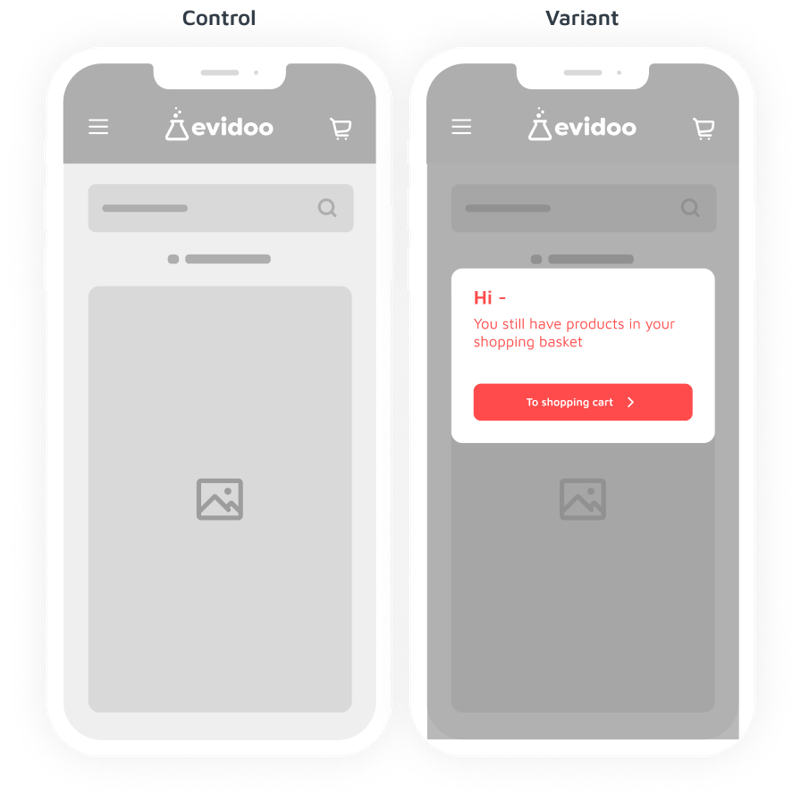83 | Add notification to returning visitors: still products in shopping cart | Mobile

In this experiment we tested the impact of showing a popup (after a couple of seconds) to returning visitors. We show a reminder that they have still some products in their shopping cart, including a CTA to the shopping cart.
This hypothesis is grounded in the following psychological principles:
- Motivation: The desire to acquire items that a user has already considered buying. A reminder can leverage the natural human tendency to complete tasks that have been started.
- Make it easier: A direct reminder about items in a shopping cart can act as a shortcut, reducing the steps to completion.
- Attract attention: A notification (in this case a popup) can serve as a visual cue that brings the user's focus back to the items they were interested in.
Based on this theoretical background, we believe that providing a reminder to returning visitors on mobile devices about their abandoned cart items, will increase their propensity to complete the purchase. We will know this when we see online transactions increase.
Across all experiments, the popup notification consistently outperformed the control. The average uplift in transactions indicates that a subtle but timely reminder for returning users works effectively on mobile.
The added convenience and visibility of the CTA shortened the path to purchase and helped convert undecided visitors.
All A/B tests in Evidoo have been analysed using Bayesian Statistics. The most important advantage of Bayesian statistics is that it is easy to understand. If there is a difference between the control and the variant, we determine the probability that there is a difference. The probability that the variation differs from the control, is indicated in a percentage.
An A/B test labeled as ">80%" (winner), indicates that the hypothesis has a high probability (>80%) of being true.
An A/B test labeled as "21 - 79%" (inconclusive), suggests the hypothesis has an intermediate chance of being true. This probability range indicates that there is still uncertainty regarding the hypothesis. Therefore it can not be clearly categorized as true or false.
An A/B test labeled as "< 20%" (loser), likely represents a hypothesis that has less than a 20% chance of being true. This suggests that the hypothesis is likely false.
If the primairy KPI is ‘transactions’, there is no impact on average order value, unless mentioned in the learnings.
All A/B tests in Evidoo are also analysed on secondary KPIs, for example 'add to carts'. If we found remarkable results on other KPI’s, check the tab 'learnings'. We also analysed different segments, for example 'new visitors' or 'returning visitors'. If we found remarkable results on specific segments, check also the tab 'learnings'.
All conducted A/B tests in Evidoo comply with:
- conducting sample size and power checks.
- performing the experiment only after an A/A test has been completed.
- implementing Sample Ratio Mismatch (SRM) checks.
- maintaining a minimum runtime of 2 weeks.
- measuring A/B tests only when they are visible to the website visitor, such as counting an A/B test in the middle of the product page only if the visitor has scrolled to that point.